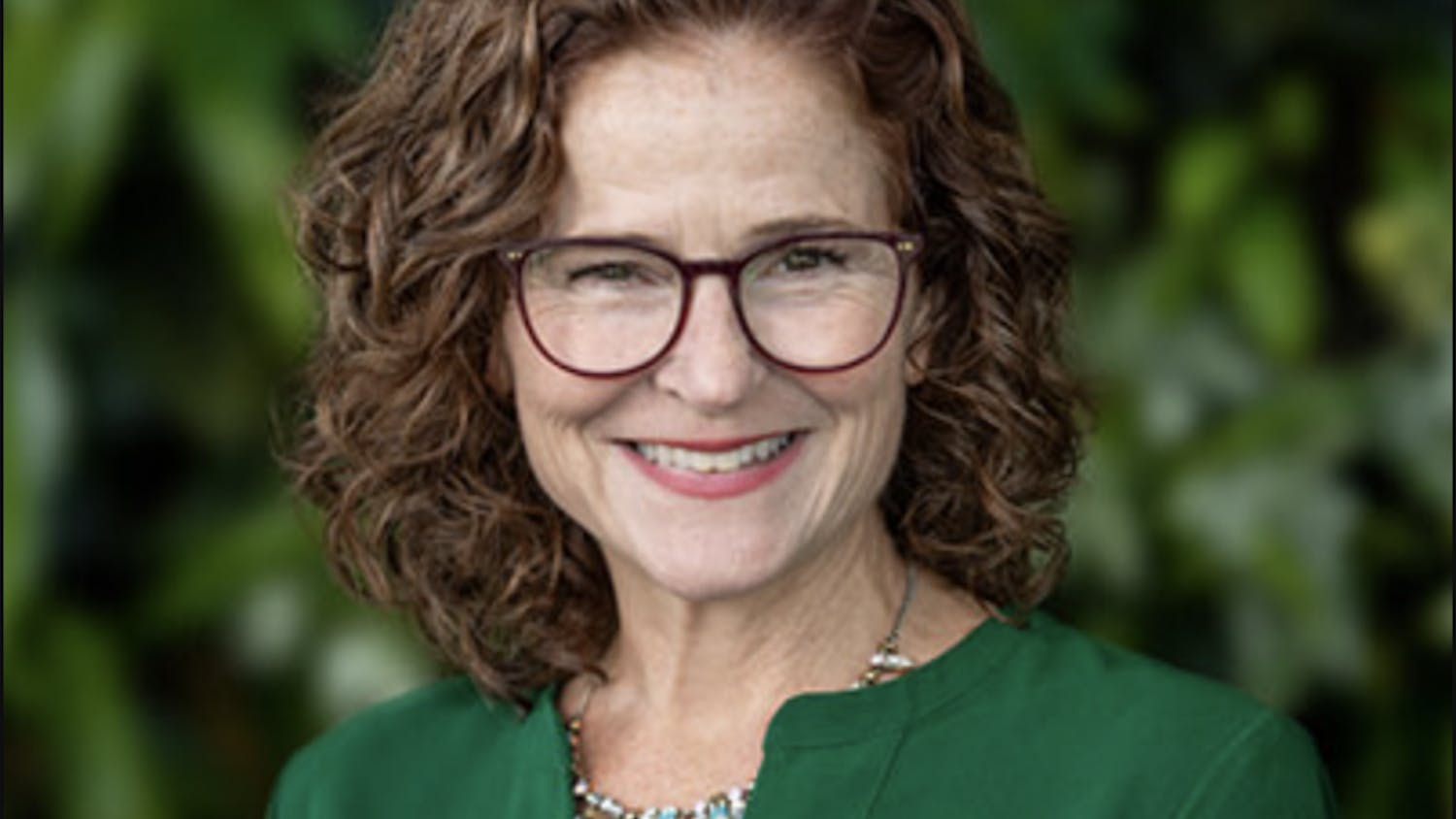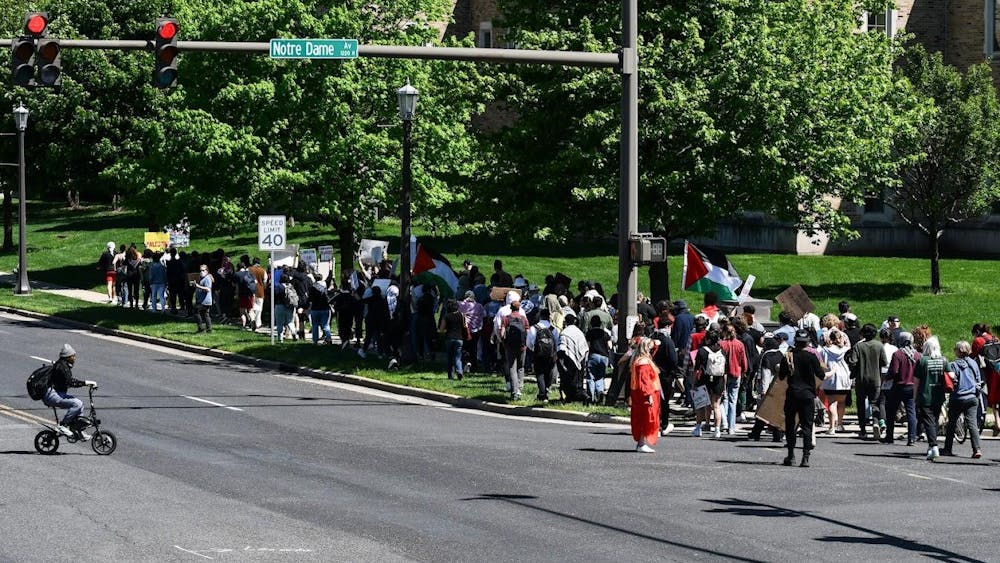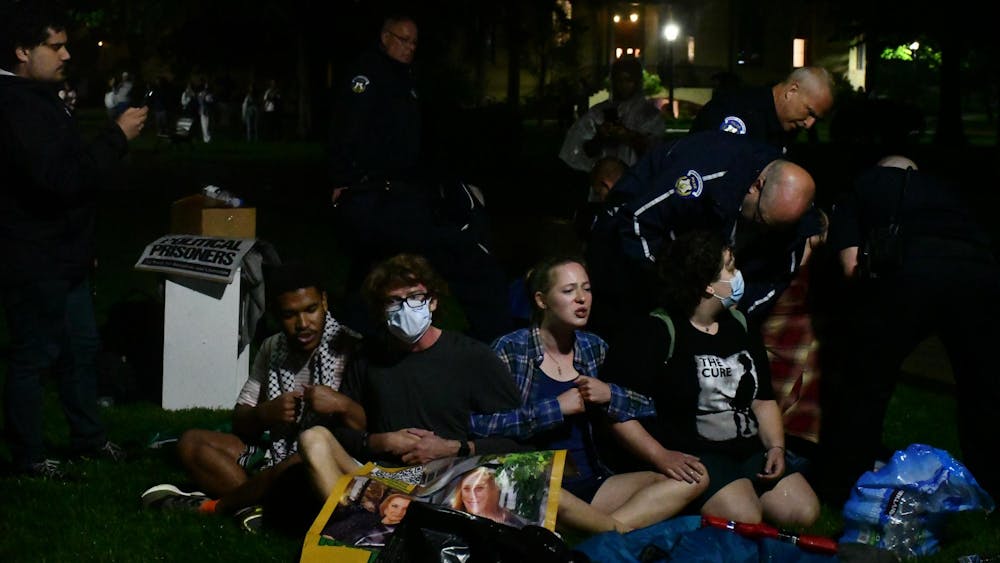
In their first of two reports to the University's Board of Trustees, student government leaders on Oct. 15 presented a report on the current state of sexual violence at Notre Dame and how the University can further work to solve the issue.
Student body president senior Bryan Ricketts said his administration chose to look at sexual violence in part because of the momentum the topic has gained both on campus and around the country in recent years.
“Sexual violence is something we’ve been talking about on our campus for a long time now,” he said. “… There’s a lot of talk about prevention and what we’re doing on front, and in addition to that it’s sort of widely accepted as a rule — but also statistically at Notre Dame — that the number of reported assaults does not nearly match the number of actual assaults that we have on campus.
“Those are still issues that we’re trying to work through,” he said. “That was a big reason behind the impetus of this report, to give some context to where we are on campus as well as to do a little digging what we need to do better and where we’re not meeting the standards.”
The report focused on four major topics: campus conversation surrounding sexual violence, the trajectory of change on the issue at Notre Dame, alcohol culture's role in sexual violence and a process overview, supplemented by students’ experiences. It concluded with a series of recommendations to Trustees on how to curb sexual violence on campus, as well as how to improve the process of reporting and navigating the Title IX process.
The campus conversation section included a history of sexual violence policy on campus in the last 10 years as well as a more thorough look at the last year and the It’s On Us campaign, student body chief of staff Dan Sehlhorst said.
“We looked at all the major incidences, as well, that happened in Notre Dame’s [recent] history, like the Abram Elam trial, the Vagina Monologues and a number of other institutional changes that have happened along the way,” he said.
Sehlhorst said the trajectory of change framework used in the report breaks down social change into three separate stages: awareness, education and action.
“The first step, awareness, really corresponds to the One is Too Many campaign and some of the earlier efforts dating back over 10 years,” he said. “All of those efforts were centered around the idea that this is happening — building awareness that this is happening, the extent to which it’s happening, making sure it’s prominent on people’s minds."
Sehlhorst said the education stage was largely taken on by the original implementation of the It's on Us campaign last year.
The final phase, action, has focused on bystander intervention, particularly in the last year with the continuation of It’s on Us and the beginning of the GreenDot program, Sehlhorst said.
Ricketts said the Board asked him and student body vice president senior Nidia Ruelas to look into the intersection of alcohol culture and sexual violence when they met last in June. Ruelas outlined a number of trends surrounding alcohol on Notre Dame’s campus based on information from the Wellness center.
Ruelas said that, through interviews with campus rectors and residents’ assistants (RAs), student government leaders found that student perception of drinking culture might not align with the reality.
“In these interviews was the acknowledgement that there is this perception among students on campus that more students are drinking than they actually are,” she said. “This kind of permeates this alcohol culture in which students think they have to go out and get drunk and that’s the only way to do this. And at the same time they’re putting themselves at risk, and not taking care of each other or taking care of themselves.”
The fourth component of the report, the process overview, examined counseling and health services for students as well as the two reporting options students have available to them on campus — the Title IX process, which goes through the University conduct process, and reporting through Notre Dame Security Police (NDSP), which opens a criminal investigation.
By speaking with more than 30 students who had been through the process and others who are familiar with it, student government identified several parts of the process students found unnecessarily difficult or inadequate.
In the NDSP reporting process, Sehlhorst said some students felt the tone of NDSP investigators came off in a way students perceived as unwelcoming. In addition, he said some Saint Mary’s students felt they had a more difficult time reporting at Notre Dame.
Ruelas said students had similar complaints about administrators involved in the Title IX reporting process, and that they could at times come across as “abrupt and unconcerned.”
The recommendations put forth by Ricketts, Ruelas and Sehlhorst fell into four main categories: campus climate for reporting and support, campus sexual violence policies, the Title IX process and accountability.
The recommendations on climate and support deal largely with cooperation with students and administration at Saint Mary’s. Ruelas cited the issue of no-contact orders. As a part of the Title IX process, when a student files a complaint against another student, a no-contact order is put in place. The University then informs hall staff and NDSP of the no-contact order, but Sehlhorst said the University does not currently inform Saint Mary's staff when a no-contact order is issued involving a Saint Mary's student.
“There’s not that same level of communication on the ground, with hall staff, professors and security. … That same burden of telling administrators and rectors is not there [for Notre Dame students],” he said.
The report also recommends that “staff advocates,” or resource coordinators, be made available to students from the moment they report an incident of sexual violence, Ricketts said.
“Right now when you go through the process, you’re given a resource coordinator, you can have someone with you. "… When you’re initially interviewed by NDSP, that may happen immediately following the assault. It may be at one in the morning at the hospital, they may be doing follow-ups the next day. And, if you haven’t reported to the Title IX coordinator, you don’t have a resource coordinator. It may just be you.
“Given the issues that students had with tone and the questions asked, we think it would be helpful to have a support person there who can help if a difficult situation comes across.”
Ruelas said they also recommended the inclusion of emotional violence to the dating and domestic violence policy. She said this would allow students in emotionally violent relationships to access the resources given to a complainant in a Title IX case, which are more extensive.
As part of the Title IX process recommendations, student government put forth three specific policy proposals.
First, they recommended that complainants be allowed to keep the notes they take during conduct hearings. Currently, complainants must leave their notes in the room and the notes are destroyed upon completion of the process — although an official record of all disciplinary proceedings is kept by the University.
“The purpose of that is that if the complainant wanted to take this to a civil case outside of the University, they could do so with the notes they had taken during the proceedings on campus,” Ruelas said.
The report also recommends the University resolve all pending Title IX cases of students who have been dismissed prior to their leaving campus.
“If the same respondent is named in multiple cases, and that same respondent is temporarily dismissed on one of them, the process as of last year was that all the other cases would be suspended until that individual reapplied to the University — and who knows when that would be,” Sehlhorst said. “So then you have that problem of opening all the wounds again for the complainant.”
Sehlhorst said the final recommendations on accountability focus on two specific areas.
“There are two elements,” Sehlhorst said. “We are calling for the university to publicly release the 2015 [sexual assault] climate survey, including the raw data. There are 26 schools which have released their surveys, so this is not an unprecedented step for Universities to do this.
“The second thing we recommend is publishing aggregate statistics on all sexual violence. That means the number of incidences of each type, the number that go into the Title IX process, the number of cases in which respondent is found responsible and the number of each type of disciplinary outcome.”
Ricketts said his administration has been working with relevant departments on the policy changes they suggested.
“We’ve had a good response, a positive response to this so far,” Ricketts said. “If I could say anything to the students reading this, first of all you are not alone if anything in this report or the students’ stories has applied to you. We encourage you to come talk to us, or publicly if you wish, and continue this campus conversation.
“This is one of the big reasons we wanted to do this, to make sure that students feel like they can talk about these issues, because we can’t pretend they don’t happen,” he said. “They can’t get better if we pretend that they don’t. … It’s imperative that if we have students who have been traumatized, that we don’t let those feelings be perpetuated.”













